I opened the mailbox to find another unsolicited piece of mail from Hospice Atlanta:
“At six months since your loss, you may be surprised — and perhaps disappointed — to not be further along in the healing process…”
I wanted to reply, “Thank you for your service, but I’m ACTIVELY ENGAGING MY GRIEF, which is SPEED GRIEVING!”
My alter ego, Henny Youngman, liked to joke about speed grieving, but this was serious business. A close friend warned me of the “widowhood effect” — the 66% increased mortality risk in the months following the loss of a spouse from the physiological impact of grief. Yikes.
Un-grieved grief is a thing. Look what I found in this morning’s Washington Post:
My husband of 20 years died seven months ago. He had been sick, but his death was unexpected.
We had a decent marriage. We were not head-over-heels in love, and that wasn’t our goal. We were good partners in life. I want to say I loved him, but maybe I don’t even know what that means. I have not grieved for him. I am sad for him that he lost the chance to fulfill his dreams. But I have at most had 10 seconds of a sob.
I discovered right away that I really like living alone. I like experiencing the world through my own eyes with no thought of a partner. I like myself better single than in a relationship.
But still, I feel something is really wrong that I haven’t grieved. I am not a cold or unfeeling person. What in God’s name is wrong here?
~ Not Grieving
Wow. Twenty years and “ten seconds of sob?” Is this speed-grieving or a grief-bypass operation?
If “actively engaging grief” is “speed grieving,” let’s explore them in reverse order:
GRIEVING — Grief is real.
We may feel grief as the uncomplicated pain of loss or as a life-consuming restructuring of being. Either way, the body instinctively shudders and shakes off the weight of sorrow.
Michael Frame, in the Geometry of Grief, explained how grief opens the door to transcendence:
Grief is a response to an irreversible loss… To generate grief rather than sadness, the thing lost must carry great emotional weight, and it must pull back the veil that covers a transcendent aspect of the world.
Singer Nick Cave, who lost his son after a fall from a cliff, takes it further:
Grief is extraordinary in its capacity to completely alter us on an almost atomic level. Suddenly, we inhabit a different body. Our relationship with everything seems to change. It’s as if we’re simply a different person. I meant that quite literally. I changed from one person to another person.
Cave seems to answer the “Not-Grieving” wife directly:
It seems to me, that if we love, we grieve. That’s the deal. That’s the pact.
Grief and love are forever intertwined. Grief is the terrible reminder of the depths of our love and, like love, grief is non-negotiable.1
ENGAGING
Nine years ago, when Karen collapsed in my arms as the elevator doors opened, my first thought was, “This is really happening.”
A silly thought, but if you slow down the words, this… is… really… happening, it becomes a soul alarm: “All hands on deck; prepare to snap out of the dream!”
When the wind picks up and the sky turns dark, we engage with what’s… really… happening… “Cover the windows, fill the sandbags, turn on the radio, seek shelter!” Extreme low pressure produces a storm.

ACTIVELY
Action verbs guided my seven-month journey: Painting, circulating, dog-walking, hosting, cooking, molting, metamorphosing, dancing, and resonating.
Activation and mobilization help us move through the grieving process. Author therapist Deb Dana, a leading practitioner of polyvagal theory (initially proposed by Dr. Stephen Porges), focuses on the nervous system’s role in healing emotional trauma. The vagus nerve wanders through the body from the brain stem to the colon to stimulate bodily functions, including digestion, heart rate, and breathing. According to polyvagal theory, the vagus nerve governs how our nervous system responds to the stresses of living to maintain an emotional equilibrium.
Deb Dana’s Hierarchy of Response describes three energetic states:
Safety and Connection (Ventral Vagal)
Engagement through Action (Sympathetic Response)
Shutting Down (Dorsal Vagal)
Dorsal Vagal
The earliest evolutionary circuit, the gut-centered Dorsal Vagal, describes feeling withdrawn, foggy, numb, and disconnected from self and others. This is the immobilized despair of deep grief.
Ventral Vegal
The newest evolutionary circuit of the nervous system is Ventral Vagal. It connects us eye-to-eye and heart-to-heart with others. Synonymous with Bondo, this state is infused with curiosity, compassion, and co-regulation. If grief offers a journey from brokenness to Bondo, and a nervous system journey from Dorsal to Ventral, how do we move from one world to another? In hospice language: “to be further along in the healing process…”
Mobilization
Like a clarinet swinging from pathos to joy, the nervous system has the capacity to move through emotional modes. According to Dana, taking action (the sympathetic response) kick-starts the movement between the two states. Even getting off the couch, walking in the park, dancing to wild music, practicing yoga, or bumping into a friend can up-regulate your state from Dorsal to Ventral. Sometimes called fight or flight, the sympathetic nervous system was designed to activate survival actions — Snake on the path! Tiger behind the tree!
Deb Dana uses the term vagal brake to describe how we can mobilize the sympathetic response without triggering cortisol panic and a racing heart. Emotional triggers occur when the vagal brake is not able to relax, reengage, and maintain Ventral Vagal regulation. Triggers present as a challenge that is too much for the flexibility of the nervous system. The nervous system senses danger, and the autonomic nervous system activates a survival response. These triggers can go either way, prompting a sympathetic mobilization or a shutdown into Dorsal Vagal.2
Mobilization described my manic phase — music blaring in my headphones while repairing walls, painting rooms, emptying filing cabinets, and tossing clothes until 1:00 am. I mobilized my nervous system to paint my way into the next chapter of my life.
Transformation through the Octave
Polyvagal theory examines how the nervous system responds to grief, while the Octave theory considers transformation to be a rising rate of vibration. My lifelong inquiry into the Octave informed my journey from shock and despair toward restoration and uplift.
I still remember Karen’s wise advice when I wrote Uplift: “Don’t go putting the Octave into your book!”
Yes, dear, but now I can stay up late and, as an obstinate male, put the Octave into everything.
Feel free to skip this section. In the simplest understanding, the Octave is the musical scale, but it is also more than music. It describes the healing and transformation of energetic states and how events unfold in time.
It’s more than a theory because it’s derived from whole numbers. You can’t argue with 2 or 3. Numbers form our universe.
An octave is a music interval defined by the ratio 2:1. If middle C on a piano is 256 Hz, the next C, one octave up, doubles it at 512 Hz.
The Octave is associated with the musical scale. Sing Do-Re-Mi-Fa-Sol-La-Si-Do, and you can feel the glorious completion when the pitch is doubled. The ratios 3:2 and 4:3 describe a fifth and a fourth in the scale. Whole numbers feel solid. Having two whole children feels way better than one and a half children.
If you look at the piano keyboard, a black key is missing between Mi and Fa and Si and Do. When you sing the scale, you can hear the rising pitch scrunch slightly between Mi and Fa and Si and Do. Imagine if a pilot pulled back on the throttle while the plane was climbing. Startled, you would look out the window and wonder, what was that? The discontinuity in the rate of rise between notes explains the missing black keys. It also explains why life unfolds with unexpected shifts that challenge our expectations. Everything in the universe is ultimately the expression of numbers.
The transformational Octave was introduced by philosopher and mystic G.I. Gurdjieff (1866 - 1949) as “The Law of Seven. His central observation: Human efforts naturally get sidetracked at key points in the Octave (the Mi-Fa and Si-Do intervals). Unexpected events or “outside shocks” enter at these intervals to upset the status quo and push us into higher gear.
The musical octave mirrors our transformational journey.
The Octave in a life narrative presents a beginning, some complications, and a resolution. We watch movies like Sophie’s Choice to experience the emotional terror of Auschwitz or Dirty Dancing to swoon with summer’s last dance. Every sitcom is an octave of set-up, conflict, and resolution. The Octave runs through symphonies, plays, pop songs, novels, illness, healing, and every human enterprise that carries risk and reward. When you enter the theater in a bubbly mood and leave transformed — this is the Octave.
Listen to Unchained Melody by the Righteous Brothers. At 1:28, the song shifts mood. The key changes, and you feel the urge to pull your dance partner closer. This is the Octave changing gears. Musicians and songwriters sense this instinctively.
The Greeks used theater as a cathartic Octave to transform societal grief. Sophocles wrote the play Ajax 2,500 years ago to help warriors transform their grief upon their return to society during a century of war and plague. It is a wrenching war story that takes the audience on an Octave journey of violence, pride, fate, and hopelessness. Ultimately, the great general Ajax takes his own life, seeing no way forward. According to accounts, the theater fell to weeping when Phrynichus staged The Fall of Miletus.
For the past seven months, I have been staging The Fall and Rebirth of Bruce Miller.
Henny Youngman might schmaltz about my tragicomedy and relational pratfalls, but puhleez; it’s no-easy to face the rawness of each new act. Speed grieving doesn’t bypass anything; it accelerates the pain.
Life is like a wild river.
A river follows natural laws, which means it goes where it pleases. Grief from a significant loss throws you and your canoe into the whitewater. I remember taking Ocoee River trips with Karen in Tennessee. The outfitters gave us a paddle, helmet, vest, safety instructions, and the fear of God to stay on the raft. It was a leisurely ride until we hit the section designed for the 1996 Olympics to challenge the best kayakers in the world. One after another, we faced an octave of turbulent crescendos — 1) Tombstone, 2) Mikey’s, 3) Blue Hole, 4) Best Ledge, 5) Smiley Face, 6) Slam Dunk. We were stuck in an inflatable raft with six others to face each drop. Like with grief, there’s no getting off.
Following this analogy, I named my seven months of grieving: 1) Shock, 2) Mania, 3) Molting, 4) Creativity, 5) Cocoon, 6) Brujo, and 7) Resonances.
On the Ocoee, the finale is 7) Humongous. If you approach Humongous at the wrong angle, you will flip. If you hit it with insufficient speed, the raft will stall, slide backward, and then spin slowly until the raft dumps all aboard. Imagine a mechanical bull slowly, then suddenly tossing a group of paddlers. As we approached Humongous, we watched the vortex swallow the raft ahead of us and jettison the paddlers into the raging river.
“Stroke hard,” Tully, our guide, commanded. The six of us pulled hard, ramming our raft through the raging water, pushing through the maelstrom, over-shooting into the pool below, and slamming our raft into a group of innocents chilling at the river’s edge.
“Excuse us.”
What does this story have to do with Actively Engaging Grief? We made a conscious decision to raft the Ocoee, knowing we would paddle through all seven drops into the vortex without getting off.
On a grieving journey, you face similar points of no return.
When Karen died, I was in shock. After the first few nights, paralyzed in a minefield of feelings, I realized I would have to pull myself up from the couch. I came to realize and accept the precept: “The Universe [probably] Didn’t Make a Mistake.” I chose to ride the river right from the start.
This takes me to that note from Hospice Atlanta:
At six months since your loss, you may be surprised — and perhaps disappointed — to not be further along in the healing process…”
After months of grieving without a discernible win, I wanted one more inning from life — to not go gently into the night but instead reinvent my next chapter. That’s when I noticed how many of my over-sixty friends also sought to reinvent themselves. I decided we were all on the same team, and since I was striking out, it didn’t matter who put a run on the board. Hitting it out of the park became my metaphor for “escape velocity” — the speed an object needs to break free from the pull of the planet’s gravity. How much energy is required to break free from an old life and into the new?
This is a serious question. How much energy, focus, determination, outside support, and love does it take to move the needle in your life? Suppose that propellant was Bondo? A rocket can’t escape straight to the moon powered by the propulsion in its tank; it uses the earth’s gravity like an orbital slingshot to reach escape velocity. Similarly, we need boosts of Bondo from friends, therapists, mentors, and lovers to reinvent our lives.
With several friends at reinvention points, I put out feelers and quickly saw how we needed each other for the orbital slingshot. In this way, Bondo describes the network effect, where mutuality provides the energy to manifest something new. When someone has your back, those guardian angels (and entrepreneurial angels) open the energetic doors. I saw this angelic boost during Karen’s final hospital stay when our network of friends (with their thoughts and prayers) boosted Karen’s inner resolve.
We summoned the angels.
I formed an informal incubator to see if one of us could put a run on the reinvention scoreboard:
● Carole Anne left her decades-long university job to launch a therapy practice but was starting with a blank slate.
● Suzy wanted to bring her art career back to the forefront and start a coaching business after years as a New York City interior house painter.
● Carol had been photographing Savannah wildlife for years but wanted to turn her work into a published book.
● Todd’s freelance art director career (and bank account) had dried up; he needed to reinvent his livelihood fast.
I offered myself as an “accountability partner” to help leverage the Bondo energy to reach escape velocity. Quite quickly, these projects slotted into place.
Out of the blue, Carole Anne’s nurse practitioner offered a first client and a place to start a therapy practice. Suzy and I planned two websites — one for her art and one for coaching. I helped Carol position her manuscript as a personal memoir: “Wild Savannah: Finding Joy After Loss Through the Lens of My Camera.” I reached out to Todd, and we started an animation business together.
“What about you, Bruce?” Carole Anne asked. “How are you reinventing your life?”
“I would like a girlfriend,” I confessed, “but that’s a bridge too far and maybe too soon. I’d settle for one cup of Bondo. If I could bring one new person into my life, which means being in regular conversation, that would be amazing.”
“That seems like a pretty modest goal,” Carole Anne replied.
“Bondo sets a very high bar,” I explained. “A conversation partner is someone just as likely to reach out to you as you to them. Conversation implies Connection, Caring, and Curiosity to form a friendship.”
Novelist and poet Wendell Berry underscored the power of conversation in a New Yorker interview:
“I believe in the importance of conversation,” he told the interviewer. “Our conversation is worth more right now than either one of us thinking separately.”
I wanted one new conversation partner. After seven months of ups and downs following my crazy invitations, I had no evidence that Bondo was working — until the proverbial “outside shock” landed in my life.
Remember Miko going berserk at 3:28 am from the lightning storm?
And how, unable to sleep, I opened Facebook, which algorithmically prompted me to join the “Awakened Souls Dating & Relationships,” and how I discovered the Schumann Resonances were exploding off the chart? There was one other part to that story I haven’t shared.
During the cabin-shaking assault of lightning and wind, I innocently searched “Atlanta” in the group, and one person, Janey, popped up. I clicked on her profile and was instantly intrigued — so many Bruce boxes aligned: Grieving journey, spiritual awakening, entrepreneur, Jewish. I scrolled through her profile and found an inspiring post — a TED talk by actor Ethan Hawke:
“If you get close to what you love,” he said, “who you are is revealed to you, and it expands.
“The time of our life is so short. Are we spending it doing what's important to us?
“Most of us not. I mean, it's hard. The pull of habit is so huge. And what makes kids so beautifully creative is that they don’t have any habits, and they don't care if they're any good or not.
“They're not building a sandcastle, going, 'I think I'm going to be a really good sandcastle builder.'
“You just have to follow your love. There is no path. There's no path till you walk it. And you have to be willing to play the fool.
“So don't read the book that you should read. Read the book you want to read.
“Don't listen to the music that you used to like; take some time to listen to some new music.
At this point, I felt Hawke was speaking to me. Then came the kicker:
“Take some time to talk to somebody that you don't normally talk to. I guarantee if you do that, you will feel foolish. And that's the point. Live for danger.
So, without thinking, I added an unsolicited comment to Janey’s post:
“Hi, Janey, this is fantastic! I started following you yesterday. I’ve been a creative since forever (films, videos, books, brands, whirling dervishes, blah blah blah). At a certain point, you discover that the human being serves as a bridge between the imaginal realm and the manifest world.”
Yeah, shameless. I was trying to impress. Then I laid it on with a quote by Tom Cheetham:
“All knowledge comes from above by means of a vision of, or union with the archetypes, the Platonic Forms. The “giver of Forms” is the Angel.”
To this day, I have absolutely no idea what Cheetham is talking about.
Janey tersely replied, “Grateful for you showing up here.”
I started commenting on all sorts of Janey’s posts (she posts several times per day), including this cartoon from Liz Fosslien:
I commented to Janey: “Needs one more frame with the dude plummeting to the bottom plus the caption ‘How did I end up here?’”
And she gave me four words, “Life offers pushes too.”
Janey next posted a Washington Post article: “Study finds that fear can travel quickly through generations of mice DNA.”
She wrote: “I believe practices can heal the trauma… I believe we need to go into the constrictions and discomfort and allow the energy to move… The consequences are remaining stuck and then all the emotional and physical consequences that go with that.”
She offered four more words: “I’ve downloaded your book.”
Whoa… my psychic brakes screeched to a halt. Nobody downloads or reads my books. Who is this person?
And so, I flirted, “Going down the rabbit hole? Now we’ll have to have coffee.”
Was that too forward? I’m supposed to wait 12 months, plus I hadn’t dated in over 40 years and hadn’t a clue about contemporary dating.
Several days went by, and nothing. Suddenly, the conversation shifted from comments to DMs. Whoa, this is serious:
“Hi — would you meet me for coffee at Golden Drops on Saturday?”
When we were kids, romance progressed from passing notes to phone calls, and now it progresses from random comments to DMs. Unfortunately, Golden Drops wouldn’t work. I had a long-planned gig as the colonoscopy driver for my friend Sarah. I moved some obligations around and offered to meet on Sunday. Janey agreed, and this is where it gets interesting.
To keep you on track, this is not a chapter about my love life — but about actively throwing myself into the Octave — the Law of Seven.
On the seventh month, to the exact day and hour that Karen passed away, Janey showed up at my doorstep with a blueberry pie.
Yeah, the Si-fucking-Do. Remember from Chapter One how pie has served as a talisman throughout my life and how Karen and I struggled to procure a slice of verboten Thanksgiving pie at Emory Hospital for our last meal together on this earth. In the world of Bruce, “I think therefore Pie am.”
“That was definitely Karen,” Carole Anne remarked when I shared the story. “Karen wants you to be happy and is orchestrating events in the invisible world.”
I attribute all sorts of serendipities to my late wife, but that may be a slice too far.
Janey and I walked to the Decatur Square, found a sidewalk table, and ordered dinner from a mostly sold-out menu. I became giddy in conversation and apologized for hogging the conversation; Janey would have none of that. And then my giddiness blossomed into a rush of energy — like whoa, whoa, whoa, this… is… really… happening.
Janey and I mostly ignored our bangers and mash, and I was thinking, “Oh shit, I’m having an out-of-body experience, and Janey is in my heart.”
Months ago, I was invited to a shiva gathering for a friend’s father.
I started talking to a happy Jewish couple in their second marriage and asked them how they met.
“We were at a party, and I just felt drawn to Irving,” the woman Ruth shared. “It was inexplicable.”
“Did you suddenly find him in your heart?” I asked.
“Oh my God, yes!” Ruth suddenly remembered. “That’s exactly what happened!”
There you have it. It’s a thing.
Janey and I walked back to the house, ate dessert, talked, split the pie in half, and hugged before she drove off. In all honesty, the pie was hopelessly runny. But I didn’t want to spoil the magic by suggesting cornstarch.
That night, I couldn’t sleep, and the following day, I found myself ungrounded in a bliss-idiot state — similar to a hangover from psychedelics. By the afternoon, I forced myself into functionality by solving a brain-burning SMTP Internet problem for a client.
If you were hoping for a bodice-ripper, a romantic comedy ending, or even a Si-Do worthy of all this set-up, this book is about the mysterious twists and turns of grief journeys. All I know is that my feelings were tied in a knot: “Who was that masked woman?”
Another plot twist: A full year earlier, I had reached out to Julie, a fellow sailor (and teacher of the 5Rhythms movement), “Hi Julie, if you ever need crew for sailing, give me a call.”
Julie finally responded one year later, “Hey, Bruce, not sure if you’re in town this weekend, but do you want to sail Sunday afternoon?”
Um… I was in Tennessee, but keeping with my “circulation” vow, I started packing immediately. The sailing was fantastic — a rare July wind, with vestibular nourishment and Bondo-like Conversation. Julie and I took a selfie picture on the dock.
The next day, Janey texted: “Hi, I saw on Facebook that you went sailing with Julie this weekend. Hope you had fun. Do you have an interest in 5Rhythms Friday night?”
And I replied with what now feels like embarrassing wit: “You must have the secret Bruce Decoder Ring. ‘I’d be delighted.’”
I don’t understand (or particularly like) 5Rhythms®. It started in the 1970s as a freeform ecstatic movement meditation by Gabrielle Roth. You don’t dance with a partner in the ordinary sense, nor talk or touch.
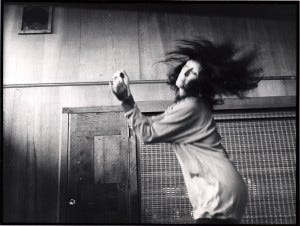
I wanted to be a good sport, so I drove to the event despite a massive storm blowing down trees and knocking out traffic signals. I even baked a loaf of sourdough for Janey. Despite my ambivalence toward 5Rhythms, I did my best to show up for Janey.
Janey spotted it and texted afterward: “My experience of your energy Friday night was skeptical and contracted.”
Somebody had to go down the rabbit hole, and it was me. Despite my self-image as a well-seasoned conscious mensch, everything out of my mouth went sideways and pushed us apart. What’s more, my memory of the dance floor was different. I felt a palpable anger toward men. I assumed because her husband divorced her amid her spiritual awakening.
I continued to comment on Janey’s posts and even invited her to dinner. After the meal, I insisted on a hug before we departed to our cars. It felt like two opposing bar magnets pointed + to +. An emotional availability was strangely missing.
I felt confused by all the Octave cues: the seventh month, the exact day and hour, the talisman pie, and how I found Janey in my heart. Was this the one time the universe made a mistake?
Years ago, after a yoga class, I asked my teacher, Mitchel Bleier, about the bar magnets of human relationships.
Mitchel answered, “The moment of attraction is a mystery. And, in the force of being together, you understand why things are.”
“Okay,” I replied. “I understand the force of attraction. But sometimes it happens and sometimes not,”
Mitchel paused and added, “Why something comes into being in a particular moment? That’s the mystery.”
The moment of attraction is a mystery. And, in the force of being together, you understand why things are. ~ Mitchel Bleier
Dana, Deb, and Stephen W. Porges. The Polyvagal Theory in Therapy: Engaging the Rhythm of Regulation. W.W. Norton & Company, 2018.






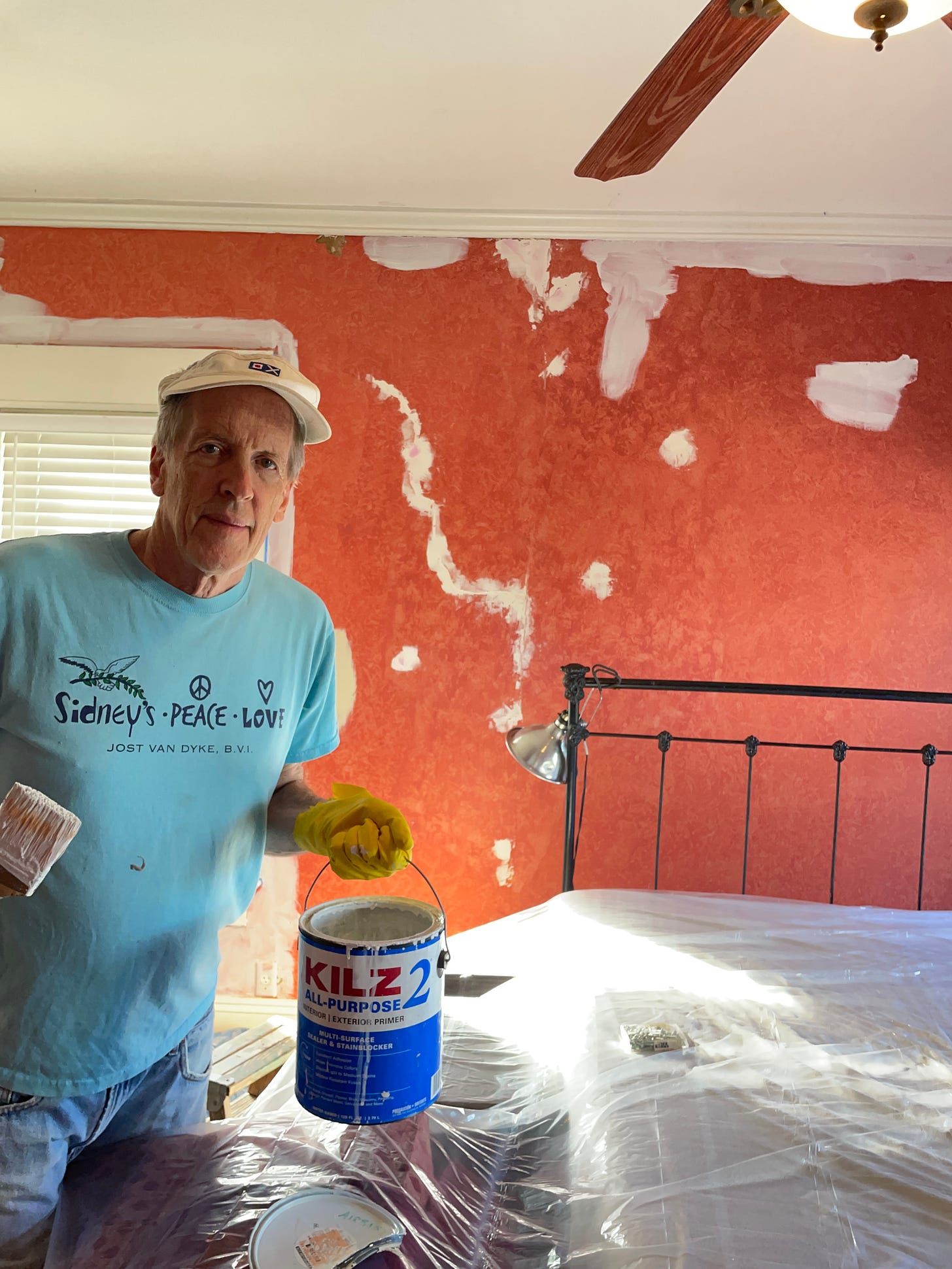


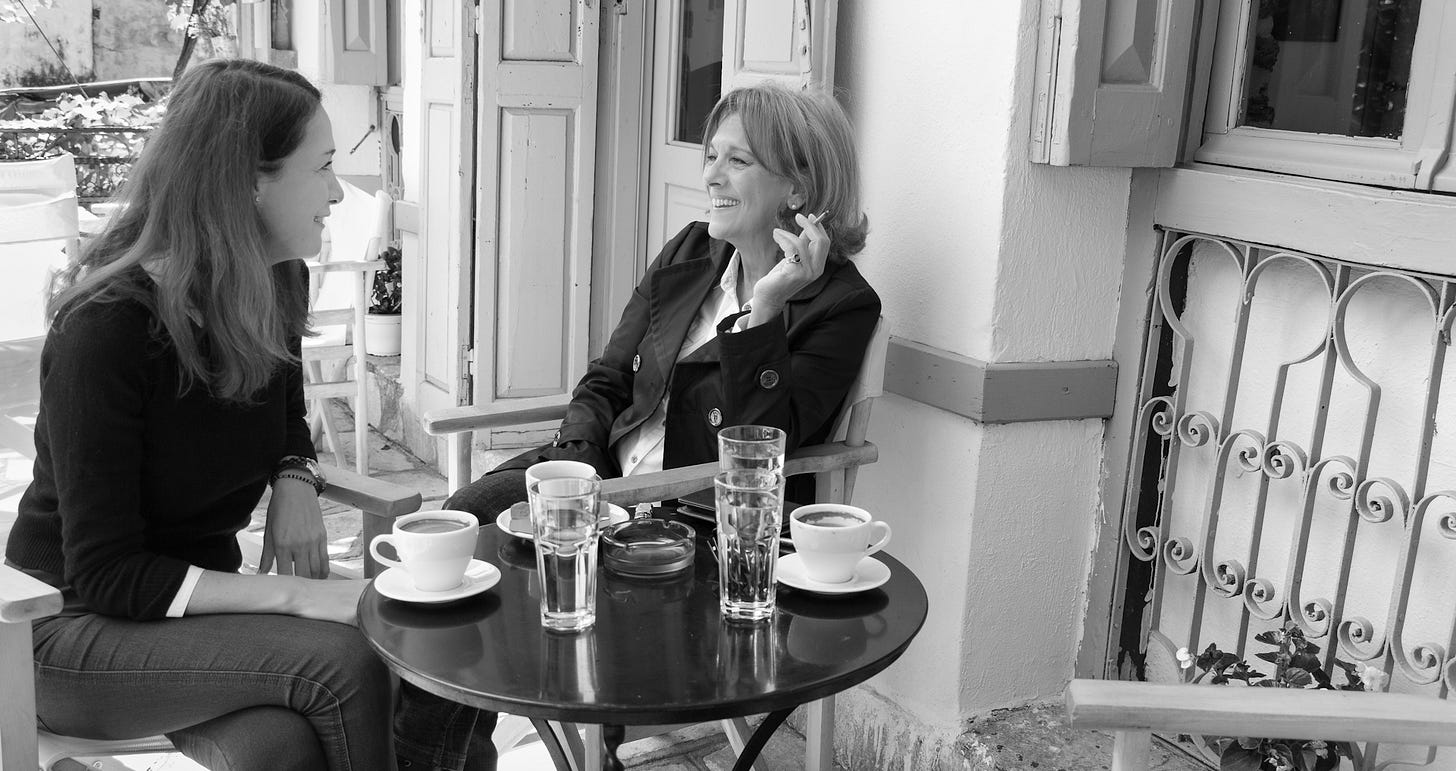


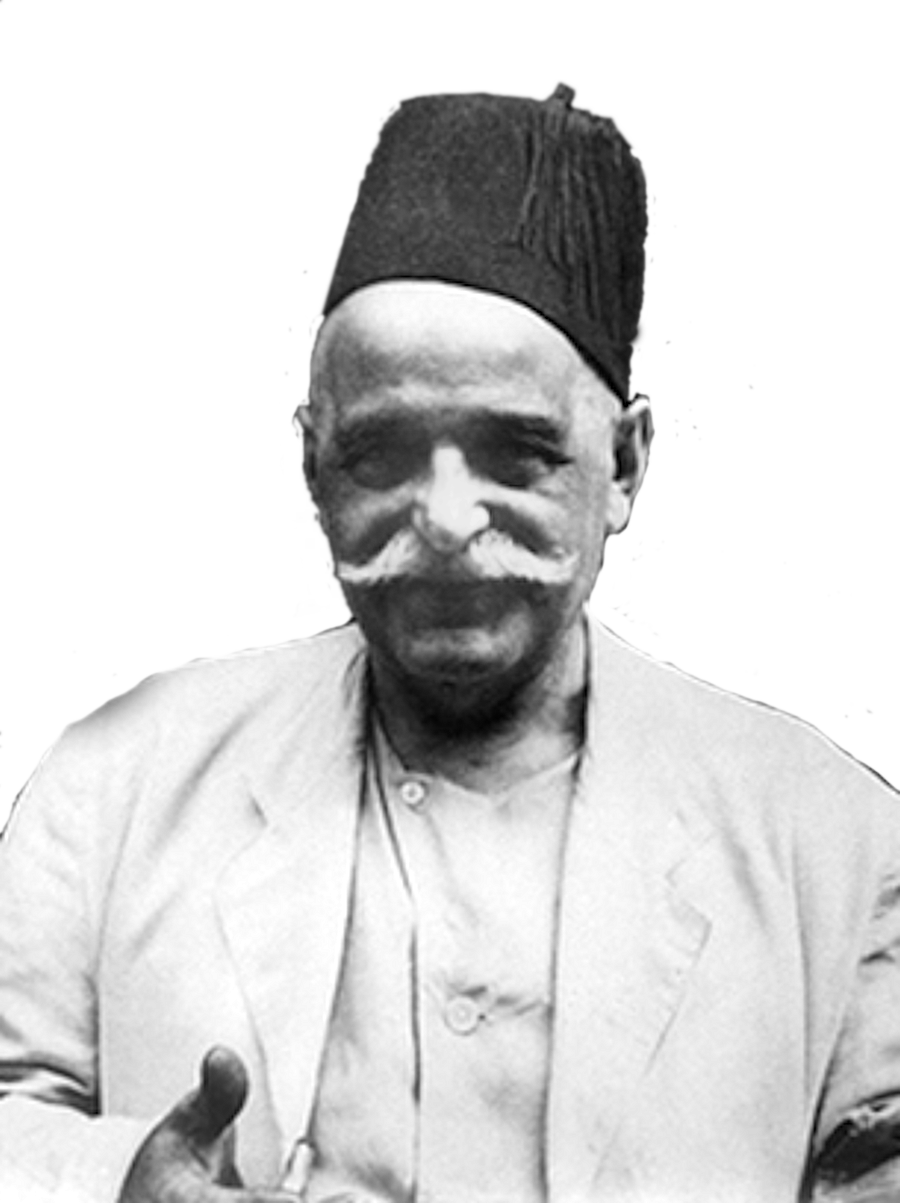



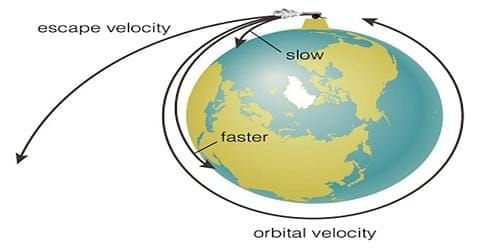

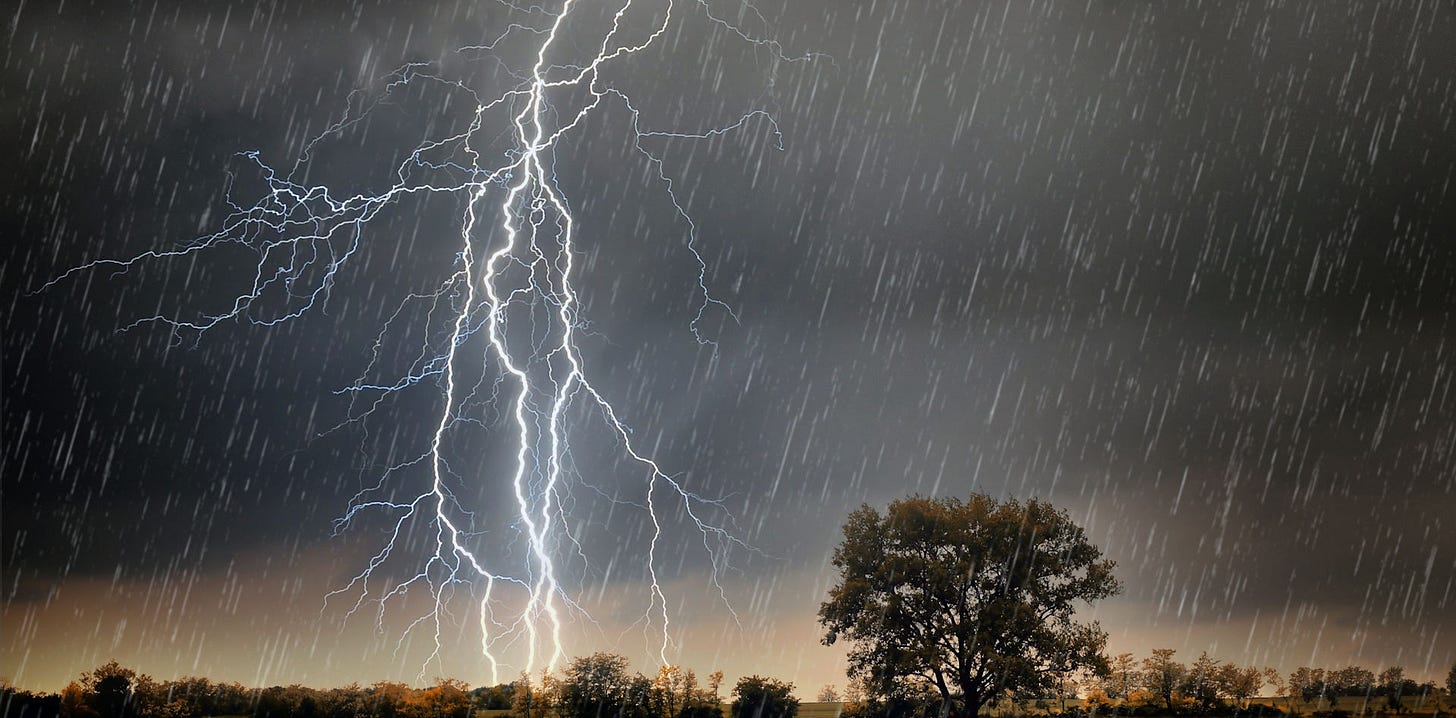


Aww, wow Bruce, I am not even half way through this post, and jesus christ, what a heart felt no exit ride down an energetic rapid. I really, really, want to joke that your problem is that you didn't listen to Karen when she said: "No Octave in the book!". And wow, wow, I love the three kinds of vagal response. Yeah, so maybe what she meant is "dumb it down". And maybe the "answer" is that people want easy solutions, but evolution (my new favorite word) can only happen with a difficult journey. With my late wife (moment of attraction) and me it was a mystery for many years why we were together. That answer came later. More later! Thanks!